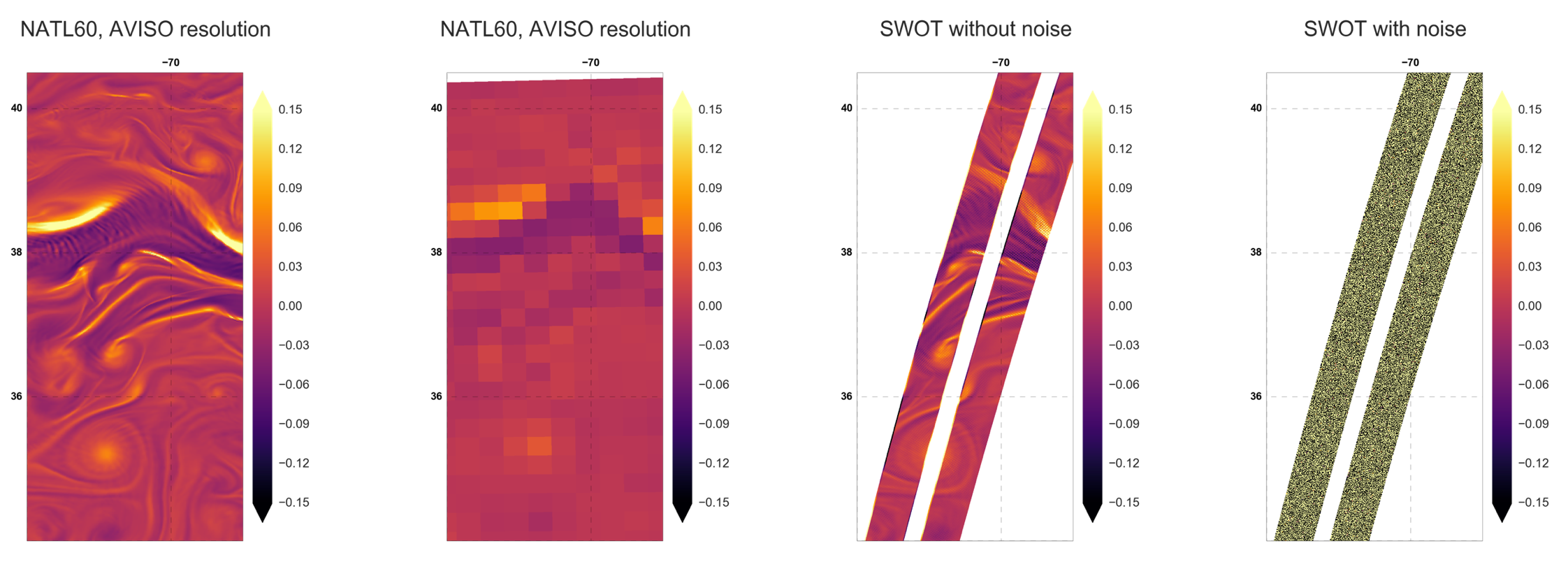The goal of BOOST-SWOT is to design new algorithms able to provide altimetry-derived SSH gridded products resolving at least the upper spectrum of the sub-mesoscale dynamics (> 50 km), incorporating SWOT data expected in 2021.
Overall, the scientific challenge deriving from this goal is to introduce ocean dynamics, through some numerical model resolving these dynamics, into the SSH mapping algorithm. The present-day DUACS algorithm, implemented by CLS to produce the widely used DUACS products, makes use of a static interpolation scheme and does not resolve scales smaller than 200 km. Tackling this challenge implies (i) the design of a numerical ocean circulation model optimal for the present challenge, (ii) the design of an appropriate data assimilation method, the role of which is to merge the model with noisy and unevenly distributed altimetric data, and (iii) the comparison with the present-day DUACS algorithm.

Figure 1 : Normalized relative geostrophic vorticity from (from left to right) 1/60° NATL60 SSH, NATL60 SSH coarsened to 1/4°, noise-free SWOT SSH simulated from NATL60, noisy SWOT SSH simulated from NATL60. The 1/4° resolution of present day SSH maps does not capture the fine scales that SWOT may see. And the very small scale instrumental noise in SWOT utterly spoils the estimation of vorticity, thus must be specifically processed before assimilation.
BOOST-SWOT (Building Of Ocean Surface Topography maps from SWOT) project will start in 2018, funded by ANR for 2018-2021. It is a ANR “PRCE” (Projet de Recherche en Collaboration avec une Entreprise) lead by IGE with CLS, Toulouse. It also includes participations from IMT (Bordeaux), IMT Atlantique (Brest) and LJK (Grenoble).
The project will fund a 3-year postdoc position at IGE (possibly starting in January 2018) and a PhD position starting by the end of 2018. Do not hesitate to contact us for more information.